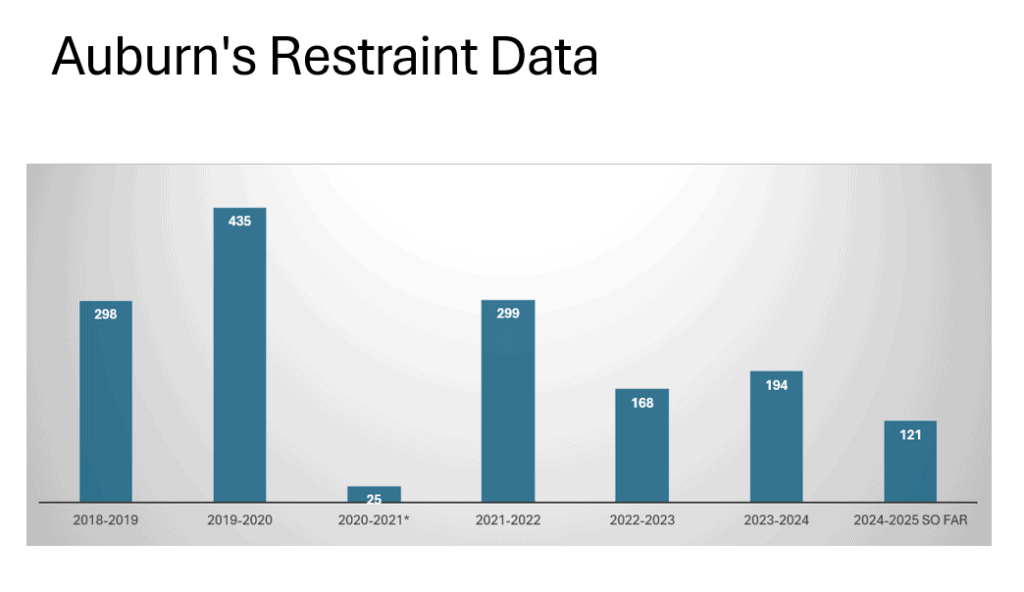In a recent interview, Patrick Mulick, Director of Student Engagement at Auburn School District in Washington state, shared his district’s remarkable journey toward more inclusive practices and improved behavioral support through the implementation of Safety-Care training and other supports. With 20 years of experience in the district and a background as a special education teacher, Mulick offers valuable insights into how schools can transform their approach to behavioral challenges.
About Auburn School District
Located about 30 miles south of Seattle, Auburn School District (ASD) serves a diverse and rapidly growing population:
- 17,000 students across 16 elementary schools, 4 middle schools, 3 high schools, and 1 alternative high school
- 113 different languages spoken
- 45% of students from multilingual households
- 18% of students born outside the US
Identifying the Need for Change
Around 2014, Auburn began examining their data regarding students with disabilities and behavioral support:
- Self-contained programs were in about 1/3 of schools, affecting inclusive efforts
- Students were often bussed away from their neighborhood schools, impacting their sense of belonging
- Traditional methods for addressing escalated behaviors relied heavily on restraint and isolation
- ASD’s crisis prevention training needed refreshing
- Staff understanding and reporting of restraint and isolation procedures was inconsistent
As Mulick noted, “When we know better, we can do better.”
The Selection Process
To address these challenges, Auburn formed a Restraint & Isolation Steering Committee comprising administrators, certified staff, and classified staff. The committee:
- Clearly defined the problems they needed to address
- Sought input from colleagues across the state and country who had switched to different de-escalation programs
- Invited multiple program representatives to present to the committee
- Conducted a pilot with Safety-Care, training three trainers and approximately 40 specialists
- Surveyed participants, finding 100% preferred Safety-Care over their previous program
- Monitored implementation over several months to ensure effectiveness
- Formally adopted Safety-Care through their curriculum adoption committee and school board
What Made Safety-Care Stand Out
Mulick highlighted several features that made Safety-Care appealing:
- Strong foundation in Applied Behavior Analysis (ABA)
- Competency-based certification requiring participants to demonstrate skills
- Extensive role-playing that prepares staff for real-world situations
- Various training options to meet different needs (abbreviated versions, parent training, advanced modules)
- High-quality coaching practices
- Fresh content that engaged participants
Implementation Strategy
Auburn’s successful implementation involved several key strategies:
- Selecting the right trainers: They chose staff with strong ABA knowledge, good presentation skills, and experience across grade levels who could relate content to various scenarios.
- Strategic scheduling: Instead of evening sessions after full workdays, they:
- Front-loaded training before the school year started
- Used in-service days and conference periods
- Created multiple scheduling options to accommodate staff needs
- Cultural shift: Beyond just switching programs, they:
- Educated staff about what constitutes restraint and isolation
- Improved reporting systems
- Created a shortened “Foundations in De-escalation” course for staff who didn’t need full certification
- Clarified who needed training based on their role in responding to behaviors
- Clear communication: The team established that anyone supporting students with challenging behaviors needed proper training, including principals, security officers, and special education staff.
Remarkable Results
The data tells a compelling story of Auburn’s success:


In the current 2024-25 school year, there have been 121 incidents of restraint to date and only 10 incidents of isolation, and the district has been able to eliminate all but 1 isolation room in its schools.
Perhaps most impressive, their elementary EBD (Emotional Behavioral Disorder) program now serves just 3 students in the entire district of 17,000 students. Middle and high school programs have similarly reduced numbers, with all students on trajectories to return to their home schools.
Sharing Success Through Demonstration Sites
Auburn’s success has led to them being selected as demonstration sites for Washington State’s RREI (Reducing Restraint and Eliminating Isolation) project. Two of their elementary schools regularly host visitors who learn about:
- Inclusive practices that help all students feel welcome
- Specialized spaces for regulation needs
- Leadership strategies that facilitate change
- Practical tools and approaches
Advice for Other Districts
Mulick offers this wisdom for educators looking to embark on a similar journey:
“If you want to go far, you have to go together.”
He emphasizes:
- Identifying a core group to lead the conversation
- Ensuring leadership involvement at all levels
- Examining data and structures objectively
- Bringing diverse perspectives to the table
- Looking at systemic issues, not just individual cases
- Being patient with the process of change
Auburn’s story demonstrates how thoughtful implementation of evidence-based approaches, combined with systematic cultural change, can dramatically improve outcomes for students with behavioral challenges while creating more inclusive school environments.
 By using our site, you consent to our use of cookies to enhance functionality and analyze site performance.
By using our site, you consent to our use of cookies to enhance functionality and analyze site performance.